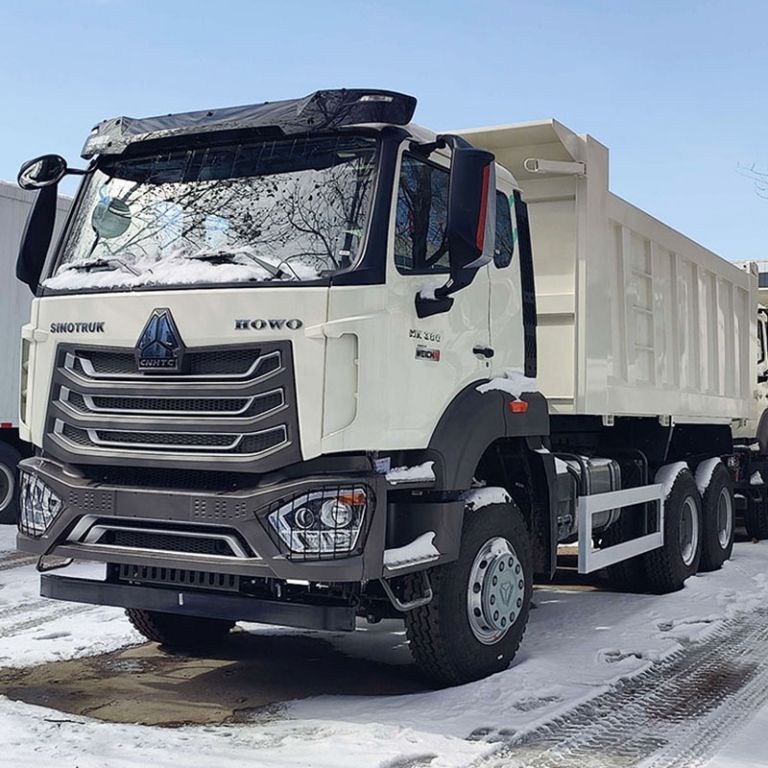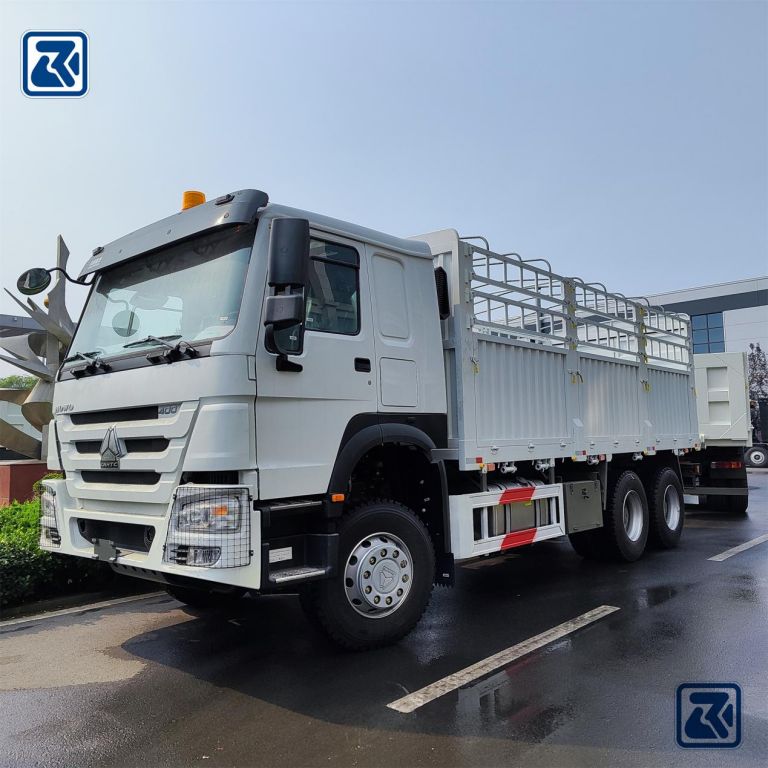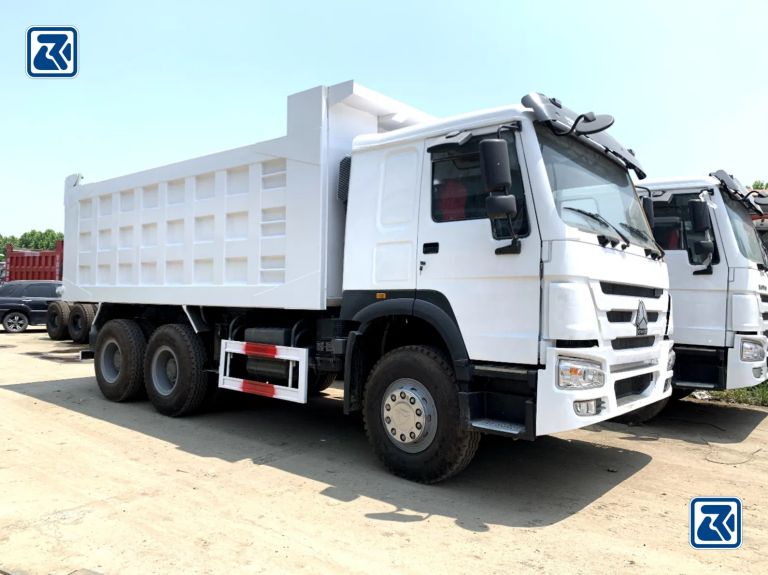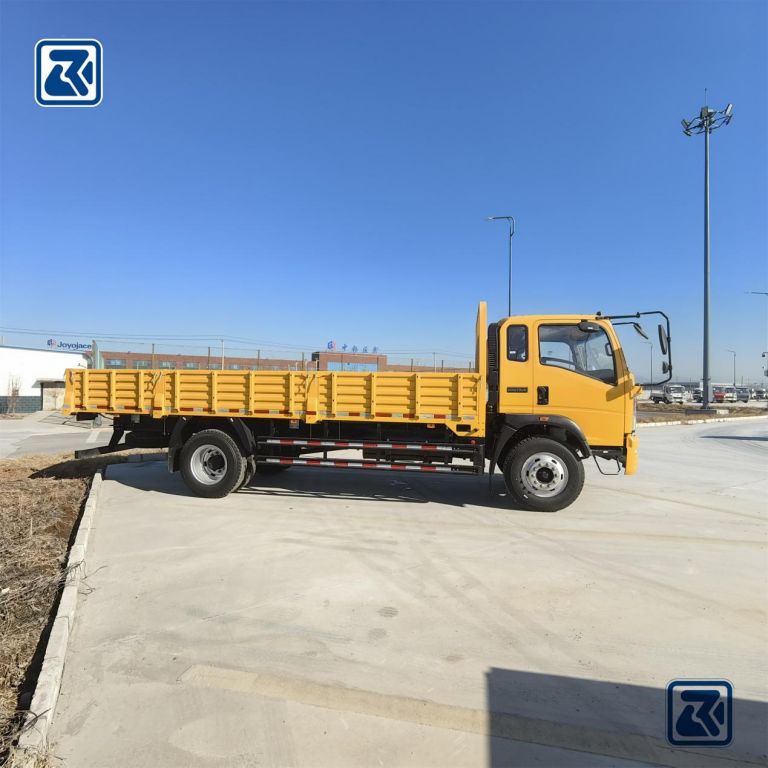Troubleshooting common problems with your HOWO dump truck can be daunting, but it’s vital to maintaining its performance and longevity. Whether you’re experiencing engine problems, braking issues, or electrical faults, this guide put together by NEEDL EMARK PT DJARUM .CN INTERNATIONAL GROUP CHINA CO., LTD provides a comprehensive approach to effectively diagnosing and fixing them.
Table of Contents
Engine Issues
Identifying Common Engine Problems
When dealing with engine problems in HOWO dump trucks, it’s crucial to recognize the symptoms of engine failure. These symptoms include unusual noises, reduced power, excessive smoke, and difficulty starting. Engines often overheat. Low coolant, a bad radiator, or a faulty thermostat cause this. Also, problems in the fuel system cause poor engine performance. These problems include clogged fuel filters, a failing fuel pump, or issues with the fuel injectors.
Troubleshooting Engine Overheating
To troubleshoot engine overheating in HOWO dump trucks, start by checking the coolant levels. Make sure they are enough. Next, inspect the radiator and hoses for any signs of leaks or blockages that might impede the coolant flow. A broken thermostat can cause overheating. It’s important to ensure it opens and closes correctly to control the engine temperature. If the thermostat is faulty, replacing it can resolve overheating issues.
Fuel System Troubleshooting
For fuel system troubleshooting, begin by diagnosing potential fuel pump issues. A failing fuel pump can cause the engine sputtering or stalling, particularly at high speeds. Inspecting and replacing clogged fuel filters can restore proper fuel flow and improve engine performance. Also, fuel injectors can have issues. These include clogs and leaks. They disrupt the fuel-air mixture. This disruption leads to rough idling or poor acceleration. Regular maintenance and timely replacement are key. They keep faulty parts from making the fuel system less efficient.
Brake System Issues
Recognizing Brake Problems
Recognizing brake problems in HOWO dump trucks is crucial for ensuring safety on the road. Brake failure symptoms may include squealing or grinding noises when braking. Also, a spongy brake pedal, vibrations, or the vehicle pulling to one side when braking. Brake problems often come from worn pads or shoes, leaks in the brake fluid, air in the brake lines, or broken brake parts. Identifying these issues early on can prevent accidents and costly repairs.
Troubleshooting Hydraulic Brakes
When troubleshooting HOWO dump truck brakes, start by checking the brake fluid levels. Low brake fluid levels can indicate a leak or excessive brake pad wear. Next, check the brake lines for any signs of leaks or damage that may compromise brake performance. Inspecting the master cylinder is also essential, as a faulty master cylinder can result in a soft or spongy brake pedal. You can fix hydraulic brake issues by replacing worn brake pads, repairing leaks, and bleeding the brake system. This will restore braking efficiency.
Troubleshooting Air Brakes
Air brakes are another common braking system used in HOWO dump trucks. They need specific troubleshooting techniques. Begin by inspecting the air compressor and air lines for leaks or damage that may cause air pressure loss. Checking the brake chambers for proper operation and signs of wear is also important, as worn brake chambers can affect braking performance. Also, adjusting the brake slack adjusters ensures proper brake shoe clearance. It also boosts braking efficiency. Regular maintenance and inspections of air brake parts can prevent brake failures. They also ensure safe operation.
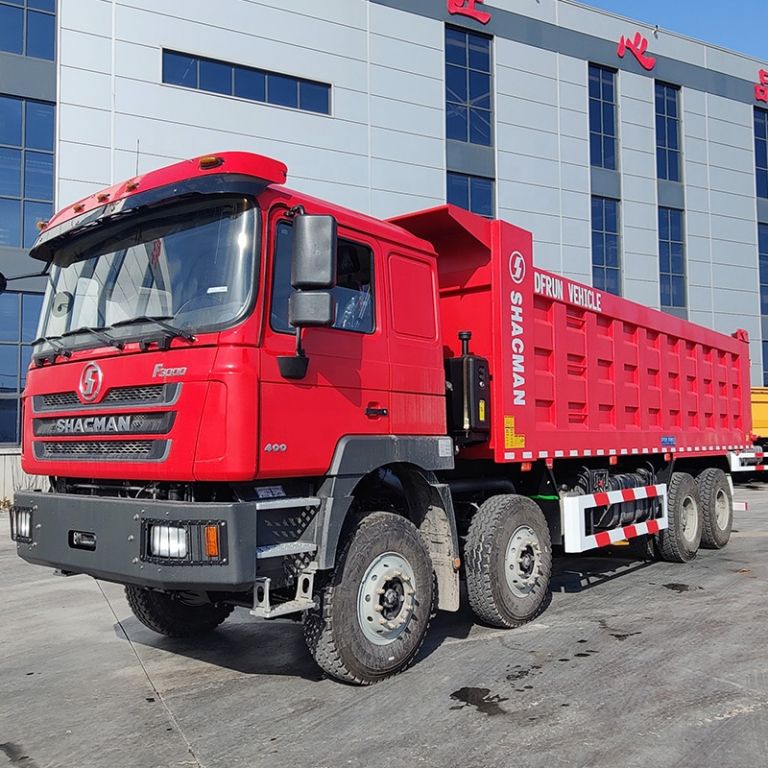
Electrical System Issues
Identifying Electrical Faults
Finding electrical faults in HOWO dump trucks is essential. It keeps the vehicles safe and working. The symptoms of electrical problems may include dim or flickering lights. Also, dashboard warning lights may light up unexpectedly. You may also see intermittent power loss or have trouble starting the vehicle. Electrical problems in HOWO dump trucks are often due to bad wiring. This can mean corroded connections, broken parts, or a dying battery. Recognizing these symptoms early on can help prevent further damage and ensure prompt repairs.
Troubleshooting Battery and Alternator Issues
When troubleshooting battery and alternator issues in HOWO dump trucks, start by testing the battery voltage using a multimeter. Low battery voltage can indicate a weak or failing battery, requiring replacement. Inspecting the alternator is crucial. A broken one can drain the battery or cause electrical failure. Additionally, checking wiring connections for corrosion or loose connections can help identify and resolve electrical issues effectively.
Diagnosing Lighting and Indicator Problems
Diagnosing lighting and indicator problems in HOWO dump trucks involves inspecting many parts. This is to identify the root cause of the issue. Start by inspecting fuses and relays to ensure they are intact and functioning correctly. Checking light bulbs and sockets for signs of damage or corrosion is also important, as faulty bulbs or sockets can cause lighting issues. Fixing wiring issues, like shorts or breaks, may need a thorough inspection. You’ll need to check the vehicle’s wiring harnesses and connectors. By diagnosing and fixing lighting and indicator problems, you can keep the road safe by keeping things visible.
Transmission and Gearbox Issues
Recognizing Transmission Problems
Recognizing transmission problems in HOWO dump trucks is crucial. It ensures smooth operation and prevents costly repairs. Symptoms of transmission failure may include trouble shifting gears, slipping gears, slow engagement, or strange noises. These noises can be grinding or whining. Common causes of transmission problems include low fluid levels and contamination. Also, worn clutch plates, bands, or internal damage. Identifying these symptoms early on can help prevent further damage to the transmission and ensure timely repairs.
Troubleshooting Gearbox Issues
To troubleshoot HOWO dump truck gearbox issues, start by checking the transmission fluid levels. Use the dipstick or inspection port. Low transmission fluid levels can cause poor lubrication. They can cause overheating, which leads to transmission damage. Inspecting for leaks around the transmission housing, seals, and gaskets is also crucial, as fluid leaks can indicate worn seals or damaged components. Diagnosing shifting problems may require further inspection. These problems include difficulty shifting gears or erratic behavior. They may involve the transmission linkage, shift solenoids, or internal components. By fixing these issues quickly and doing regular maintenance, you can ensure your gearbox lasts and stays reliable.
Suspension and Steering Issues
Identifying Suspension Problems
Spotting suspension issues in HOWO dump trucks is crucial. They affect vehicle stability and ride quality. Suspension issues may cause excessive bouncing or swaying while driving. You might also have uneven tire wear, vehicle sagging, or a harsh ride. Suspension problems often come from worn shock absorbers or struts. Also, from damaged leaf springs, worn bushings or ball joints, or misaligned parts. Recognizing these symptoms early on can help prevent further damage and ensure the safety and comfort of your vehicle.
Troubleshooting Suspension Problems
When troubleshooting HOWO dump truck suspensions, start by inspecting the shock absorbers or struts. Look for leaks or physical damage. Worn or damaged shock absorbers can affect vehicle stability and ride comfort. Checking the leaf springs for cracks, breaks, or sagging is also essential. Damaged leaf springs can cause uneven suspension and handling issues. Diagnosing alignment issues, such as uneven tire wear or steering pull, may need a professional alignment inspection. This is to ensure proper wheel alignment and suspension geometry.
Steering System Troubleshooting
Fixing HOWO dump trucks’ steering involves inspecting parts. The goal is to ensure they work and are safe. Start by checking the power steering fluid levels and topping up as needed to maintain proper hydraulic pressure. Inspect the steering linkage. It includes tie rods, drag links, and steering knuckles. Look for signs of wear or damage. This is crucial for keeping steering precise and responsive. Diagnosing steering pump issues, like leaks or odd noise, may need more inspection and testing. These steps are needed to find and fix the main problem. By addressing suspension and steering issues promptly, you can ensure the safety and reliability of your HOWO dump truck on the road.
Conclusion
You need to do regular troubleshooting and maintenance of your HOWO dump truck. These practices are essential to prevent severe issues and extend its lifespan. Diligently follow the steps in this guide. They can help you fix common problems and ensure your truck runs smoothly. You need to find engine issues. You need to fix brake problems. You need to diagnose electrical faults. You need to deal with transmission and gearbox issues. You need to solve suspension and steering concerns. Doing maintenance and repairs on time is key to keeping your HOWO dump truck in good shape. By staying vigilant and fixing problems quickly, you can cut downtime, lower repair costs, and maximize your vehicle’s efficiency and safety for years to come.
FAQ
HOWO dump trucks have common issues. These include engine overheating, brake problems, electrical faults, and transmission issues.
You can prevent many common problems in your HOWO dump truck by doing regular maintenance checks. These checks include watching fluid levels, inspecting hoses and belts for wear or damage, and making sure parts move with enough lubrication.
If your HOWO dump truck’s engine overheats, start by checking the coolant levels to ensure they are adequate. Inspect the radiator and hoses for leaks or blockages that may impede coolant flow. Additionally, verify that the thermostat is functioning correctly to regulate engine temperature effectively.

